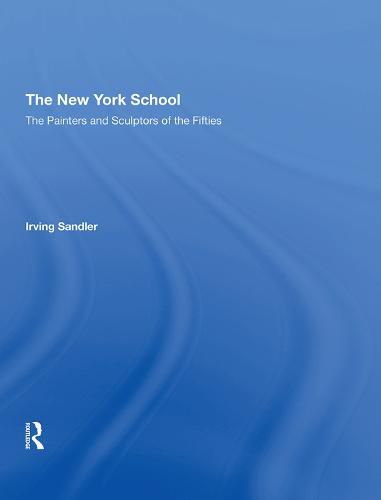Readings Newsletter
Become a Readings Member to make your shopping experience even easier.
Sign in or sign up for free!
You’re not far away from qualifying for FREE standard shipping within Australia
You’ve qualified for FREE standard shipping within Australia
The cart is loading…






FROM 1947 TO 1951, more than a dozen Abstract Expressionists achieved breakthroughs to independent styles. 1 During the following years, these painters, the first generation of the New York School, received growing recognition nationally and globally, to the extent that American vanguard art came to be considered the primary source of creative ideas and energies in the world, and a few masters, notably Pollock, de Kooning, and Rothko, were elevated to art history’s pantheon. Younger artists who entered their circle in the early fifties-the early wave of the second generation-such as Larry Rivers, Helen Frankenthaler, Grace Hartigan, Allan Kaprow, Joan Mitchell, Robert Rauschenberg, and Richard Stankiewicz (to list some of the better known), were also acclaimed, but with a few exceptions, their reputations had gone into decline by the end of the fifties. In the following decade, the second generation was eclipsed by a third generation, the innovators of Pop, Op, Minimal, and Conceptual Art. (Any notion of a generation of artists is necessarily arbitrary, of course. The term generation, as it is used here, refers to a group of artists close in age who live in the same neighborhood at the same time, and to a greater or lesser degree, know each other and partake of a similar sensibility, a shared outlook and aesthetic.)
$9.00 standard shipping within Australia
FREE standard shipping within Australia for orders over $100.00
Express & International shipping calculated at checkout
FROM 1947 TO 1951, more than a dozen Abstract Expressionists achieved breakthroughs to independent styles. 1 During the following years, these painters, the first generation of the New York School, received growing recognition nationally and globally, to the extent that American vanguard art came to be considered the primary source of creative ideas and energies in the world, and a few masters, notably Pollock, de Kooning, and Rothko, were elevated to art history’s pantheon. Younger artists who entered their circle in the early fifties-the early wave of the second generation-such as Larry Rivers, Helen Frankenthaler, Grace Hartigan, Allan Kaprow, Joan Mitchell, Robert Rauschenberg, and Richard Stankiewicz (to list some of the better known), were also acclaimed, but with a few exceptions, their reputations had gone into decline by the end of the fifties. In the following decade, the second generation was eclipsed by a third generation, the innovators of Pop, Op, Minimal, and Conceptual Art. (Any notion of a generation of artists is necessarily arbitrary, of course. The term generation, as it is used here, refers to a group of artists close in age who live in the same neighborhood at the same time, and to a greater or lesser degree, know each other and partake of a similar sensibility, a shared outlook and aesthetic.)